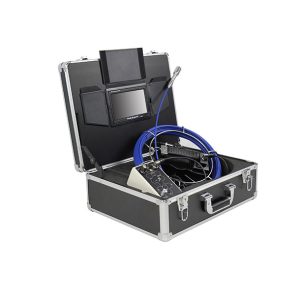The development of society affects the development of the city. The city’s civilization is inseparable from pipelines, such as drainage pipelines, gas pipelines, drinking water pipelines, and fire-fighting pipelines; so if such a large pipeline group still uses traditional inspections, first of all, the labor cost is enormous. Insufficient timeliness is not ideal for safety; nowadays, the non-destructive testing technology of pipeline endoscopes is becoming more and more advanced, and the cost is getting lower and lower. With the popularity of industrial endoscopes, people do not need to inspect and repair pipelines destructively. There are various operation and inspection methods, and the industrial endoscope’s visual inspection method is one of them. This pipeline detector can be applied to detect welds, corrosion, and various sundries inside the pipeline and is widely used.
In the particular inspection industry, for the detection and inspection of pressure pipelines, the macroscopic assessment is carried out by visual inspection and prevention in the early stage. Users can use visual inspection tools such as industrial endoscopes to inspect the internal structure, geometric dimensions, and surface conditions (such as cracks, corrosion, leakage, deformation, etc.).
The pipeline structure and geometric dimensions should be inspected during the first periodic inspection. During the second regular inspection, only the pipelines that have suffered from fatigue, the channels that have undergone transformation or significant repairs, and the focus on the review of whether there are new defects in the abnormal parts of the structure and geometric dimensions.
Visual inspection shall generally include the following:
1) Inspect pipeline structure, including pipeline layout, support, hanger, expansion joint, opening reinforcement, discharge device setting, etc.
2) Geometric dimension inspection, including misalignment, undercut, weld reinforcement, etc.
3) Appearance inspection, including corrosion, cracks, leakage, bulging, deformation, mechanical contact damage, overheating, arc burns, deformation and cracking of pipe support parts, pipe support parts deformation, cracking, and discharge (drainage, sewage) devices Blockage, corrosion, deposits, damage, and peeling of the anti-corrosion layer, damage and peeling of the insulation layer, decay and cracks in the supermarket and under the insulation layer, etc.
(The above part is excerpted from the “Periodic Inspection Rules for Pressure Pipelines-Industrial Pipelines” TSG Special Equipment Safety Technical Specifications.)
As a commonly used visual inspection tool, industrial endoscopes can directly observe defects on the surface in inspecting industrial pipelines, boilers, and other special equipment. They can save data by taking pictures and videos, which is more convenient to use, easy to operate, light, and easy to carry, so it has been widely used.
Seesem industrial endoscope has been focusing on the industrial endoscope for five years. It has independently developed and produced various industrial endoscope products. Its original pipeline replaceable system can alone replace various specifications of pipelines with different diameters, lengths, and depths of field. , waterproof, oil-resistant, and anti-corrosion. Millions of high-definition cameras have better image quality with automatic white balance image processing technology. The mechanical/electrical control joystick controls the probe to turn 360° to realize observation without a dead angle. At the same time, the whole machine is more compact and easy to carry, and the operation is more convenient and worry-free.


